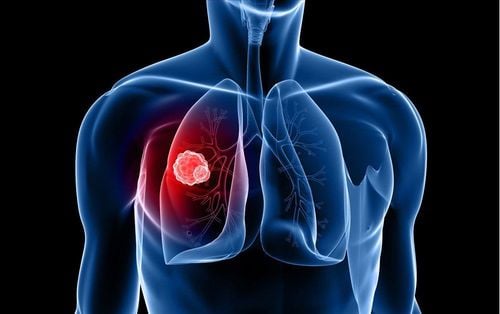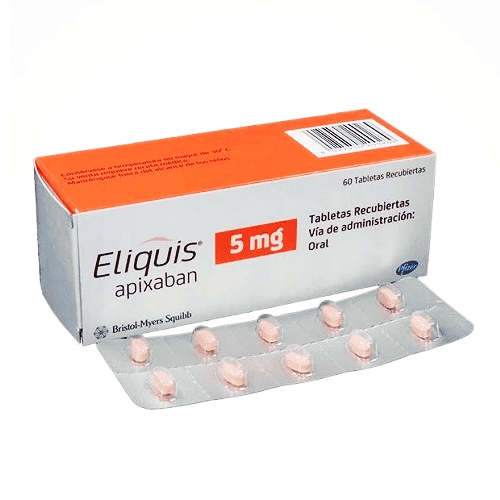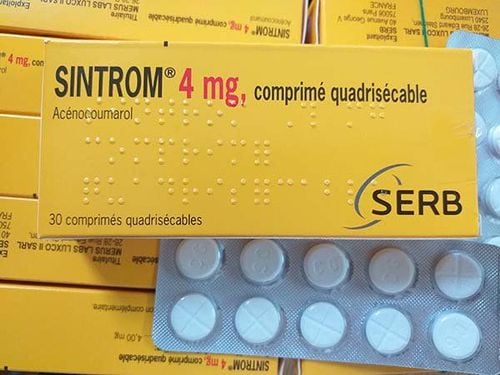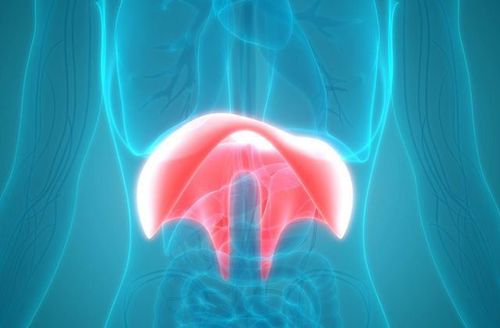In patients with blood clotting disorders, even healthy women undergoing a cesarean section can develop blood clots, tissue, fat, air bubbles, etc., that enter the bloodstream and travel to the lungs, leading to postpartum pulmonary embolism. If not treated promptly, this condition can be life-threatening for the mother.
1. What is Pulmonary Embolism?
Pulmonary embolism (PE) is a blockage in the blood vessels of the lungs caused by blood clots. Pulmonary embolism can occur in the central pulmonary artery or near the edges of the lungs. If a large blood clot causes a blockage close to the center of the lungs, it can cause severe symptoms and is referred to as a "massive pulmonary embolism," which can be life-threatening.
Most cases of pulmonary embolism are caused by deep vein thrombosis (DVT). Therefore, individuals at risk for PE are those who are prone to DVT. Other risk factors include immobility for prolonged periods, serious illnesses, and major surgeries.
Postpartum pulmonary embolism can also be caused by obstructive materials such as amniotic fluid from pregnancy complications, air embolism from central venous catheter insertion, tissue, fat, air bubbles, etc., entering the bloodstream during a cesarean section. The risk of PE after childbirth can be significantly reduced if the mother starts moving early or if certain preventive medications are used to prevent clot formation.
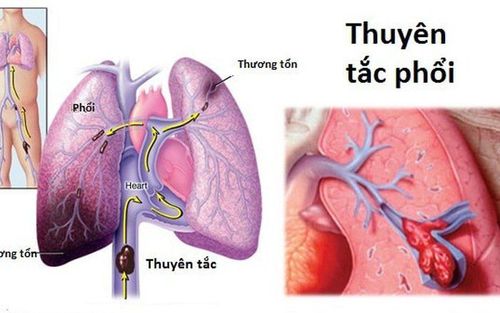
2. What Causes Postpartum Pulmonary Embolism?
According to specialists, the primary cause of postpartum pulmonary embolism in most cases is the formation of a blood clot in the deep veins, known as deep vein thrombosis (DVT). This clot travels through the bloodstream and becomes lodged in one of the blood vessels in the lungs.
In rarer cases, postpartum pulmonary embolism is caused by other factors such as:
- Amniotic fluid during pregnancy or childbirth — amniotic fluid embolism (rare).
- Large air bubbles in veins (rare).
- Fat droplets from a fractured bone's marrow.
- Foreign objects from unclean syringes, such as those used for injecting drugs.
- A small piece of a tumor breaking off from a larger tumor in the body, such as in cancer.
3. Risk of Pulmonary Embolism in Pregnant and Postpartum Women
The risk of pulmonary embolism during pregnancy is five times higher than in non-pregnant women and twice as high postpartum. Deep vein thrombosis commonly forms in the deep veins of the left leg. As childbirth approaches, there are several changes in the body that increase the likelihood of blood clotting to limit blood loss during pregnancy and childbirth.
Additionally, during labor, strong uterine contractions exert significant pressure on the pelvic veins, causing small injuries to the veins, which increases the risk of blood clots and postpartum pulmonary embolism.
The risk of pulmonary embolism during pregnancy increases if the pregnant woman:
- Plans to undergo a cesarean section.
- Is overweight.
- Has high blood pressure.
- Has preeclampsia.
- Has a family history of blood clots or clotting disorders.
- Is over 35 years old.
- Smokes.
- Has varicose veins.
4. Symptoms of Pulmonary Embolism

Symptoms of postpartum pulmonary embolism depend on the size of the blood clot and the condition of the lungs to cope with the clot. Postpartum women or those with pre-existing conditions are typically more vulnerable, leading to more severe symptoms, including:
- Shortness of breath after childbirth, ranging from mild to very severe.
- Pleuritic chest pain, sharp pain when inhaling.
- Inability to take deep breaths due to the pain, causing breathlessness.
- Coughing up blood.
- Slight fever.
- Rapid heart rate.
- Weakness, feeling unwell, or dizziness.
- Massive pulmonary embolism can lead to sudden cardiac arrest and quick death, even with immediate medical intervention.
Some symptoms of deep vein thrombosis (DVT) that patients may experience include: sudden pain in the calf, swelling of one leg or foot, calf muscle pain, warmth and redness in the calf, and possible bruising on the skin.
5. Treatment for Postpartum Pulmonary Embolism
Postpartum pulmonary embolism can be dramatically treated if detected early and intervened promptly. Some treatment methods include:
- Anticoagulant medication is often started immediately when pulmonary embolism is suspected to prevent further complications while awaiting test results. Anticoagulant therapy is usually continued for up to three months after the pulmonary embolism in most cases.
- Oxygen therapy is administered during the initial phase to improve breathing and reduce hypoxemia.
- In some cases, intravenous fluids are given to support circulation, and close monitoring or admission to an intensive care unit (ICU) may be necessary if the patient is unwell or has a massive pulmonary embolism.
Currently, Vinmec International General Hospital applies thrombolytic therapy to treat patients with pulmonary embolism emergencies. With modern diagnostic equipment providing CT perfusion results within 7 minutes, the procedure is routinely performed. The technique is carried out by experienced medical professionals and supported by modern equipment, ensuring high-quality service.
To arrange an appointment, please call HOTLINE or make your reservation directly HERE. You may also download the MyVinmec app to schedule appointments faster and manage your reservations more conveniently.
To arrange an appointment, please call HOTLINE or make your reservation directly HERE. You may also download the MyVinmec app to schedule appointments faster and manage your reservations more conveniently.
